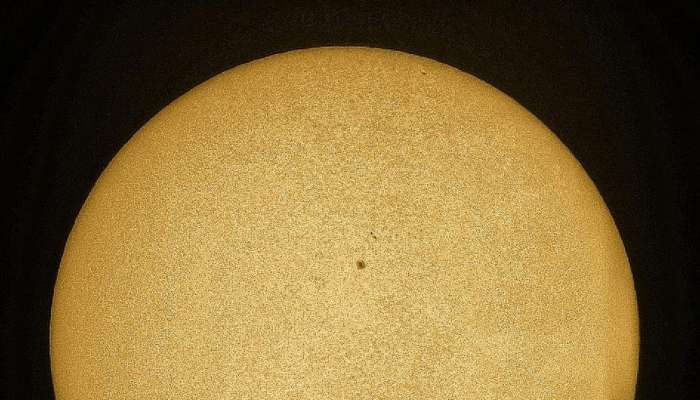
Muscat: Members of the Oman Society for Astronomy and Space (OSAS) observed one of the largest sunspots to appear on the sun's surface during the 25th solar cycle, known as Sunspot 4079. The sunspot's size exceeded 11 times the size of planet Earth.
Observers were able to clearly photograph this spot from the skies over Muscat Governorate using specialised astronomical equipment, in a rare scene that reflects the peak of solar activity currently being experienced by the sun.
Wesal bint Salem Al Hinai, Vice Chair of the Community Engagement Committee at the OSAS, said: "Sunspot 4079 is one of the largest phenomena we have observed during the current solar cycle. Photographing it from the Sultanate of Oman is a scientific and astronomical achievement that highlights the OSAS's efforts to monitor cosmic phenomena that directly impact Earth. This requires community awareness of the risks of space weather and its potential impact on communications, navigation, and energy systems."
She added: "Sunspots are one of the most prominent phenomena associated with the Sun's magnetic activity. They represent a crucial indicator in understanding the behavior of our solar system's star and its multiple effects on Earth. The Sun undergoes regular cycles of magnetic activity known as "solar cycles," each lasting an average of about 11 years. During these cycles, the Sun's surface undergoes significant changes in the number of sunspots, the intensity of flares, and coronal mass ejections, which directly impact space weather and the geomagnetic environment surrounding Earth."
Sunspots are the most visible manifestation of this cycle, increasing in frequency as solar activity increases and decreasing toward the end of the cycle. Currently, the Sun is experiencing the peak of the 25th solar cycle, which began in December 2019. This is a phase of intense magnetic disturbance during which the number of sunspots is markedly increased.
A daily average of about 215.5 sunspots was recorded in August 2024, the highest in more than two decades, indicating that the 25th solar cycle may have peaked earlier than expected.
In late February In 2025, the sun erupted a powerful solar flare, detected by NASA's Solar Dynamics Observatory. These flares are classified as Class X flares, the most intense. This event was followed by a coronal mass ejection, which triggered a geomagnetic storm that reached Earth in April 2025, causing auroras across large areas of mid-latitudes and partially impacting high-frequency radio communications systems.
In May 2025, the sun showed another unprecedented surge of activity, with the number of sunspots exceeding previous predictions, indicating a peak that may be the strongest in decades. This activity is accompanied by powerful solar flares and coronal mass ejections, potentially leading to geomagnetic storms that could impact Earth. This cycle is expected to continue until 2030, with solar activity gradually declining after the peak.
One of the most prominent historical phenomena associated with extreme solar activity is the Carrington Effect, the most powerful solar storm documented in modern times. It occurred in 1859. On September 1 of that year, British astronomer Richard Carrington observed a powerful solar flare emanating from a massive sunspot. Within 24 hours, high-energy solar particles reached Earth, causing a widespread magnetic storm. Auroras were observed in unusual locations, such as the Caribbean, and its effects were even felt in Hong Kong and Rome. The storm also disrupted telegraph networks and caused fires due to electrical sparks.
This event serves as an early warning of the potential dangers of solar storms in an age of heavy reliance on technology, such as satellites, electricity grids, and communications.